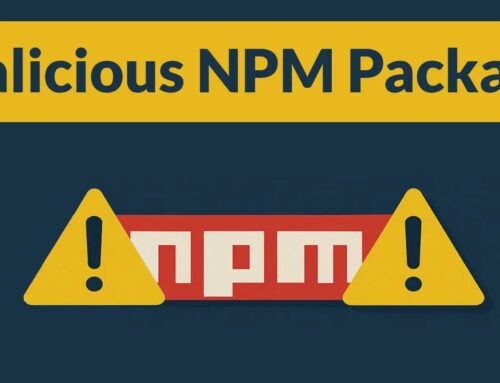
New ‘Plague’ PAM Backdoor Exposes Critical Linux Systems to Silent Credential Theft
Unmasking Plague: The Silent PAM Backdoor Menacing Linux Systems
A new, highly sophisticated Linux backdoor, aptly dubbed Plague, has been uncovered, sending ripples through the cybersecurity community. This stealthy implant has managed to evade detection for over a year, silently compromising critical Linux infrastructure and posing a significant threat to global organizations. Its modus operandi leverages a core component of Linux authentication, making it particularly insidious. As cybersecurity professionals, understanding this new threat is paramount to safeguarding our systems.
What is the Plague Backdoor?
Plague is a previously undocumented malicious implant specifically designed to target Linux operating systems. Its primary objective is to facilitate silent credential theft and establish persistent, unauthorized SSH access. What makes Plague exceptionally dangerous is its integration as a malicious PAM (Pluggable Authentication Module). This allows it to subvert standard authentication mechanisms, granting attackers unfettered access to compromised systems without raising red flags.
The Critical Role of Pluggable Authentication Modules (PAM)
To grasp the severity of the Plague backdoor, it’s essential to understand PAM. Pluggable Authentication Modules (PAM) are a highly flexible and extensible framework used in Linux and Unix-like operating systems to manage authentication services. Instead of individual applications handling authentication directly, they defer to PAM. This modularity allows system administrators to choose and configure different authentication methods (e.g., passwords, Kerberos, biometric scans) without modifying the applications themselves.
PAM works by providing a layered approach to authentication. When a user attempts to log in (e.g., via SSH, sudo, or a graphical login), the application sends the authentication request to PAM. PAM then consults its configuration files (typically located in /etc/pam.d/) to determine which modules to load and the order in which they should process the request. These modules can perform various functions, including:
- Authentication: Verifying user credentials.
- Account Management: Checking account validity, expiry, etc.
- Session Management: Setting up or tearing down user sessions.
- Password Management: Handling password changes and complexity rules.
By creating a malicious PAM module, as Plague does, attackers can intercept and manipulate authentication requests at a fundamental level. This allows them to bypass legitimate security checks, log credentials, and grant unauthorized access, all while appearing legitimate to the operating system.
How Plague Achieves Silent Credential Theft and Persistent SSH Access
The core innovation behind Plague lies in its exploitation of the PAM framework. As stated by Nextron Systems researcher Pierre-Henri Pezier, “The implant is built as a malicious PAM (Pluggable Authentication Module), enabling attackers to silently bypass system authentication and gain persistent SSH access.”
- Authentication Bypass: When a user attempts to log in via SSH, the malicious PAM module intercepts the request. Instead of performing a proper authentication check, it can be configured to simply “succeed” regardless of the credentials provided, or to accept a specific backdoor password.
- Credential Theft: While the primary goal is bypass, a malicious PAM module can also log plaintext credentials as they are entered by legitimate users. This gives attackers access to valid usernames and passwords, which can be used for further lateral movement or to maintain access even if the initial backdoor is discovered.
- Persistent SSH Access: By subverting the authentication process, the attackers can ensure that their specially crafted SSH keys or compromised accounts are always accepted, granting them persistent, undetectable access to the system. This means even if the system is rebooted or legitimate accounts are changed, the backdoor remains active.
Remediation Actions for Plague Backdoor
Detecting and mitigating a sophisticated PAM-based backdoor like Plague requires a multi-layered approach. Proactive measures and incident response capabilities are critical.
Detection and Analysis
- PAM Configuration Auditing: Regularly audit the contents of
/etc/pam.d/and the modules in/lib/security/or/lib64/security/. Look for any unknown or recently modified PAM configuration files or shared libraries. Compare checksums against known good configurations. - System and Authentication Log Monitoring: Scrutinize authentication logs (e.g.,
/var/log/auth.log,/var/log/secure) for unusual login attempts, successful logins from unknown IPs, or login inconsistencies (e.g., a user logging in without a corresponding failed attempt after many attempts). - File Integrity Monitoring (FIM): Implement FIM tools to monitor changes to critical system files, especially those related to PAM configurations and shared libraries. Any unauthorized modification should trigger an alert.
- Process Monitoring: Look for unusual processes running with elevated privileges or processes that persist across reboots without a clear purpose.
- Network Traffic Analysis: Monitor for suspicious outbound connections from Linux systems, particularly those to unusual or known malicious IP addresses or unexpected ports.
Mitigation and Prevention
- Principle of Least Privilege: Ensure all users and services operate with the absolute minimum privileges required to perform their functions.
- Strong Authentication Practices: Enforce strong, unique passwords and multi-factor authentication (MFA) for all SSH access and critical services.
- SSH Key Management: Regularly audit authorized SSH keys (
~/.ssh/authorized_keys) for all users, especially root. Revoke any unknown or suspicious keys. - Patch Management: Keep all Linux distributions, kernel, and software packages fully updated to patch known vulnerabilities that attackers might exploit for initial access.
- Security Hardening: Follow Linux hardening guidelines, such as disabling unnecessary services, configuring firewalls, and securing unprivileged user accounts.
- Limit SSH Exposure: Restrict SSH access to trusted networks and implement IP whitelisting where possible. Consider using a jump host or bastion host for SSH access.
- Regular Security Audits: Conduct periodic internal and external security audits and penetration tests to identify weaknesses.
Incident Response
If a compromise is suspected:
- Isolate Affected Systems: Immediately disconnect or reconfigure network access for suspected compromised machines to prevent further spread.
- Forensic Analysis: Conduct a thorough forensic investigation to identify the attack vector, extent of compromise, and persistence mechanisms.
- Credential Rotation: Force a password reset for all user accounts, especially those with root or sudo privileges.
- Rebuild or Restore: For highly compromised systems, a full reinstallation from trusted media may be the safest option, followed by restoration of data from recent, clean backups.
Tools for Detection and Mitigation
| Tool Name | Purpose | Link |
|---|---|---|
| Tripwire Enterprise | File Integrity Monitoring (FIM) of critical system files, including PAM configurations. | https://www.tripwire.com/products/tripwire-enterprise |
| OSSEC HIDS | Host-based Intrusion Detection System for log analysis, file integrity monitoring, and rootkit detection. | https://www.ossec.net/ |
| Auditd | Linux native audit system for monitoring system calls, file access, and security-relevant events. | https://linux.die.net/man/8/auditd |
| Lynis | Security auditing tool for Unix-like systems, performs extensive system hardening and vulnerability scans. | https://cisofy.com/lynis/ |
| ClamAV | Open-source antivirus engine for detecting trojans, viruses, malware and other malicious threats. | https://www.clamav.net/ |
Conclusion
The emergence of the Plague backdoor underscores the sophisticated and evolving nature of Linux threats. Its ability to leverage PAM, a fundamental authentication mechanism, highlights a critical attack surface often overlooked by traditional security measures. By understanding the inner workings of such implants and implementing rigorous security practices – from proactive monitoring and robust configuration management to rapid incident response – organizations can significantly reduce their exposure to this and similar advanced threats. Vigilance and continuous adaptation remain our strongest defenses in the face of these silent digital adversaries.





